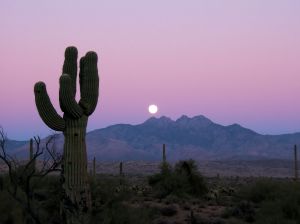Tent Camping and More in America’s National Forests
Howdy, all, and welcome back to your source for all things camping, AllCampgrounds.
From yesterday’s discussion about national parks, I wanted to dig in deeper and talk with you about the great camp grounds around national forests.
These huge, densely wooded areas are home to complex ecosystems and plenty of wildlife, and spending a few nights in one is a unique experience not to be missed.
All About National Forests
There are over 150 national forests in the United States, covering just under 200 million acres. Use of the national forests for timber, mining, and other industrial purposes is permitted, but there’s also a long tradition of balancing these uses with the needs of people to connect with the land and the protection of animal habitats. The forests are closely linked with America’s frontier heritage, after all: the vast majority are west of the Mississippi, and represent what remains of the land as Old West pioneers found it.
Things to Know About National Forest Camp Grounds
National forests are protected by the National Forest Service. Reservations for camp grounds in these forests can be made online or by telephone using Recreation.gov, part of a comprehensive initiative to make access to pubic land and rec facilities a little easier for everybody. Note that a national forest’s camp grounds can’t usually be booked to capacity; about half of the available sites in each forest are considered “first come, first serve.”
Pets are welcome in national forests as long as they are leased and under the control of an owner at all times. Tent camping is permitted in most areas at a prescribed distance from paths and trails, and some forests even have RV hookups, though this isn’t as widespread as in other kinds of parks. The key thing to remember is that damaging any live tree is always prohibited, and national forests, even moreso than national parks generally, are extremely sensitive to fire, which may only be allowed at developed sites.
Most developed sites have at least one outhouse, for those who appreciate a “camping bathroom.”
A Few Outstanding National Forests
George Washington National Forest, Virginia: Combined with the Jefferson National Forest to form one of the largest public wild spaces in the U.S. Including about a million acres of pristine, undeveloped land, Washington is the site of several endurance races along its vast network of hiking trails, and is a flush habitat for black bears.
Sequoia National Forest, California: Home to almost 40 groves of the world’s largest tree, the giant sequoia, which can grow up to nearly 300 feet. Though there are a scant few taller trees, none can match the diameter of the giant sequoia. Tucked away in southern Cali, Sequoia National Forest and its surroundings also play host to avid winter sporting. Skiing is especially popular here. Learn more about the park and its activities here.
Mark Twain National Forest, Missouri: Offering a huge range of hiking trails, bike paths and even horse trails, as well as ATV and handicapped accessible areas, Mark Twain stretches across the most counties of any national forest. Hunting and fishing is allowed throughout most of MTNF, and non-hunters can enjoy creeks and mountains stretching on mile after mile. Look here for more info on camping and wilderness areas at MTNF.
This is just a taste of all that the national forests have to offer, and we’ve only just scratched the surface of the modern camping scene and all its opportunities for fun and adventure. We’ll continue our quest to learn about all campsites in the U.S. in the next installment of our blog!



Just found your site this morning. It is extremely well-written and informative. I keyed in my wife’s new blog address as I thought you might be interested in linking with her if she did the same with you. Keep up the great posts and many thanks, Mike D
Comment by Mike D — March 28, 2010 @ 6:46 am